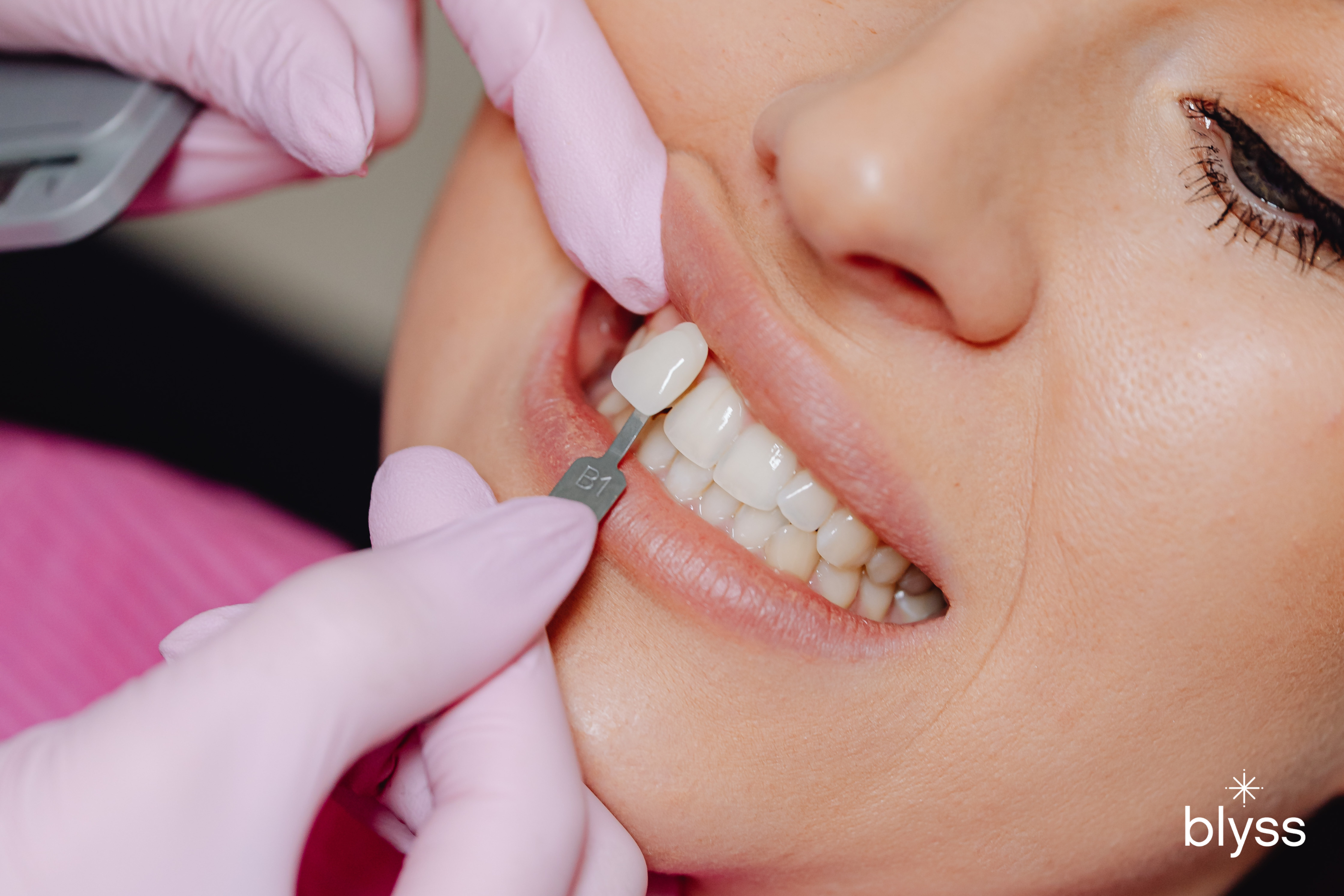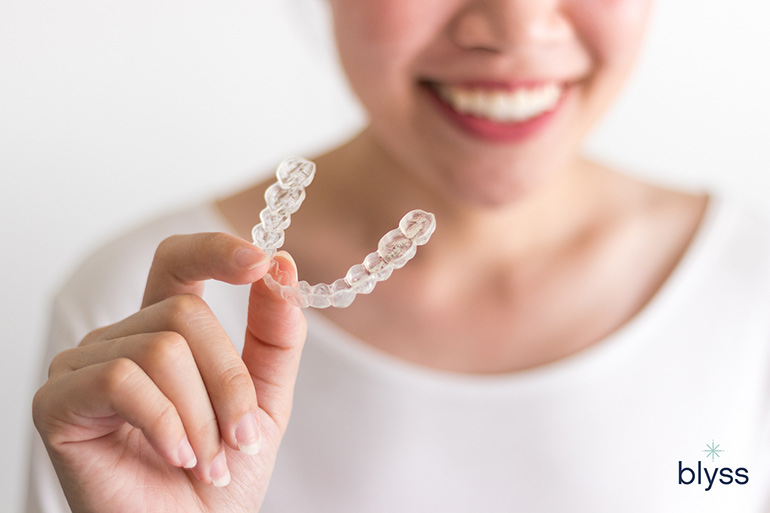Porcelain veneers are the most common type of veneers that people get. But, you may have heard or read things that made you ask, “Should I really get veneers?”
Don’t worry! In this article, I will give you answers to questions you probably won’t even ask your dentist. I outlined and gave clarity on the most common misconceptions about porcelain veneers.
Knowing facts from fiction can help you understand veneers more. It will make it easier to choose the cosmetic treatment plan that suits you if you are well informed.
Read more: Know what to discuss with your dentist before getting veneers.
Continue reading and give yourself leverage in getting the perfect porcelain veneers in Del Mar and San Diego.
Myth 1. All Veneers Are Made Of Porcelain
Not all veneers are made of porcelain. Porcelain is not the common material that cosmetic dentists recommend. There are other types of ceramic veneers other than porcelain.
Type of Ceramic Veneers Materials You Can Get in San Diego
| Description | When it’s used | |
|---|---|---|
| Porcelain Veneers |
|
|
| EMAX Veneers |
|
|
| Zirconia Veneers |
|
|
Most people know porcelain. It is the most used material in cosmetic dentistry for centuries. It is often used together with metal or ceramic. They are also commonly used on the back teeth for crowns.
Dental practitioners developed new materials which are not only more natural-looking but also durable. Emax, which is the most popular, is one of these materials.
What is Emax? Emax is a lithium disilicate glass-ceramic that ceramists mill or press in the dental laboratory. It became one of the most popular choices due to its superior quality in aesthetics and versatility.
Is Emax also porcelain? No, they are two different materials. Emax can be used alone which is called monolithic or can be layered together with porcelain.
Now, is Emax better than porcelain? Porcelain is just one of the materials used in achieving a natural-looking veneer. Using porcelain together with Emax ensures a better-looking and durable veneer that can last for a long time.
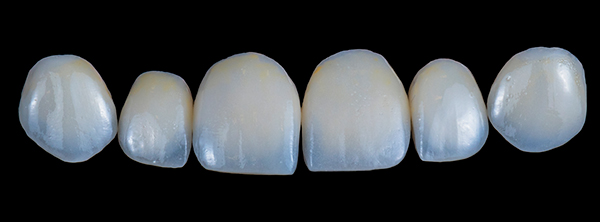
Emax, or lithium disilicate, is a highly popular material used for veneers due to its high aesthetic value and strength.
Myth 2. Porcelain Veneers Will Ruin Your Teeth
Many patients ask me, “Are porcelain veneers bad for my teeth? Can they ruin teeth?” I always tell them, “No, not veneers. But mismanaged teeth reduction surely can.”
What is tooth reduction? Tooth reduction is the process of removing a part of your natural tooth to give space for a porcelain veneer or crown.
The old practice is to reduce a big part of your natural tooth to install veneers. This puts the tooth at high risk for postoperative sensitivities which could lead to more serious problems.
The front surface of your teeth will be reduced. Then, your dentist will take molds to be sent to the dental laboratory. Before going home, your dentist will fabricate and install temporary veneers from your mock-up.
You might feel a little sensitive with your temporaries so your dentist might place a desensitizer to protect your teeth.
Now, can you get porcelain veneers without tooth reduction? Nowadays, new technologies allow us to have veneers with minimal to no tooth reduction.
With minimal to no-prep veneers, tooth reduction is limited only to the teeth’s top layer. In traditional tooth preparation, tooth reduction is deeper, and more tooth structure is removed. More tooth reduction poses more risk for postoperative sensitivity.
Don’t hesitate to book an appointment here at Blyss Dental if you are looking for a trained cosmetic dentist in San Diego who can give you minimal-prep veneers. We can surely help you achieve your perfect Hollywood smile.
Myth 3. Porcelain Veneers Look Fake And Noticeable
Some veneers do look fake and noticeable. These are commonly the cookie-cutter designs that you see everywhere on social media. Often, they look ultra white which is associated with having perfectly healthy teeth which made them so popular back in the day.
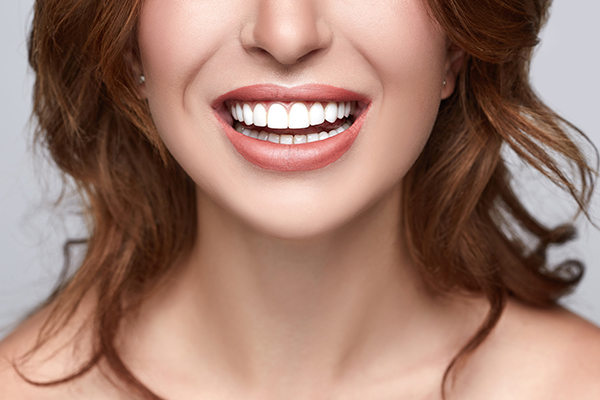
Ultra-white veneers is becoming a trend in social media. However, these may look unnatural and noticeable. Get porcelain veneers that match the natural appearance of your real teeth.
Nowadays, people want improvements or upgrades to their smiles without actually looking like they had something done.
New technologies allow us to layer porcelain to make it more natural-looking and match the features of your real teeth. We can even put characterizations or small stains or hints of imperfections to make it look more natural.
Aside from the color, shape also plays a crucial part in the appearance of the veneers. The tiny detail on the corner or angle of the veneer would have a great impact on the overall appearance of the face.
A squarish or more angled veneer is often associated with masculinity or maturity and strong personas. Rounder veneer gives a more feminine or softer and younger appearance. Triangular-shaped teeth are commonly done for a more Hollywood smile.
You must be able to try out the veneers with trial mock-ups to see which shape and color would best suit you. If you don’t want people to notice that you have veneer, make sure to choose a color and shape that will compliment your appearance.
At Blyss Dental in San Diego, we only use the top materials and master ceramist to ensure the most natural-looking veneers for you.
Myth 4. Porcelain Veneers Last Forever
A common question I get from patients is, “Do veneers break?”
Porcelain veneers are not indestructible. Improper care could shorten the lifespan of your veneers and might cause further problems in the long run.
Your porcelain veneer’s longevity will depend on its care and maintenance. Some ways to ensure the longevity of your veneers are listed below:
- Regular dental checkups every 4-6 months
- Regular cleaning and stain removal
- Routine X-rays to monitor decay and bone levels around the veneers
- Flossing correctly and proper brushing technique
- Cautiousness with anything you bite or eat
- Custom-fit mouth or night guard to protect veneers from grinding
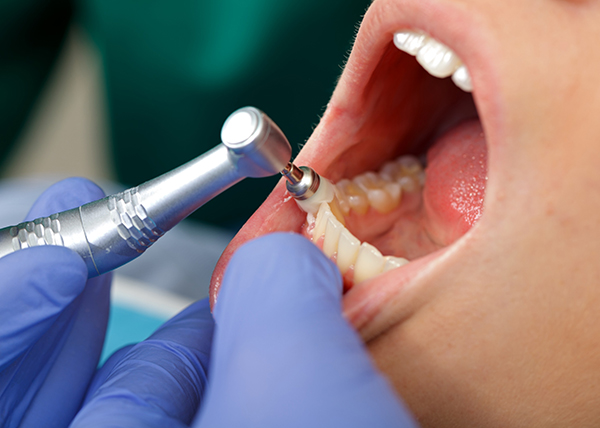
Keeping your porcelain veneers in pristine condition still requires regular visits to your dentist.
A tooth with plaque also poses risk for cavity development. If left untreated, this could develop gum problems like gum bleeding and gum recession. This will eventually weaken the natural tooth and might require repeating the porcelain veneer.
Having the perfect Hollywood smile does not mean you will no longer need your dentist. A well-maintained porcelain veneer could potentially last around 15 years or longer.
Myth 5. Porcelain Veneers Are Reversible
“Are porcelain veneers reversible? Can you remove or replace them?” I also get these questions a lot. The quick answer to that is, “No. They are not reversible.”
Remember that before getting veneers, your tooth (or teeth) might need to be reduced. Once the natural tooth is reduced, it can no longer be put back in its natural state.
You may ask, “But what about no-prep veneers?” You might think that with no teeth reduction, it can easily be reversed since no natural tooth structure was removed. This is not always the case.
Veneers are permanently cemented to the teeth so if you want to replace or remove them, you’ll have to totally break them.
The procedure of removing the veneers will not guarantee that the teeth underneath will still be in their natural state. In some cases, part of the natural tooth comes off with the veneer and cement, and this might require a filling or restoration.
Veneer Color and Shape: Are they reversible?
Another irreversible factor of porcelain veneers is color. Although shade can easily be adjusted by the dental technician, once the veneer is cemented, changing the color may not be possible anymore.
People think that they can get teeth whitening if they don’t like the color of the veneers. Teeth bleaching or whitening only affects the natural tooth.
Since the porcelain veneer covers the natural teeth, the bleaching solution can not be absorbed by the natural teeth. This means once you have your veneers, they will not be affected by the teeth whitening solution anymore.
The color is a combination of the coping, porcelain layer, and glaze. These are all permanent and made in a dental laboratory.
So, before the permanent cementation, trying out your porcelain veneer in different lighting can help you see if you got the perfect shade.
One thing you can adjust with veneers is the shape or angles. This is not recommended since you will be removing the glaze or seal of the porcelain but sometimes, this can be modified to improve the look.
Changing your mind after cementing the porcelain veneers on your teeth is not ideal. Knowing what you want to achieve before going to your dentist can help avoid having regrets about the final result.
That’s why you must know what you are getting into when getting veneers. Trial fittings also play a great factor before having them cemented permanently.
Myth 6. Porcelain Veneers Are The Best Treatment Option
Porcelain veneers are not the best solution to all teeth problems. Some extensive cases may require other orthodontic treatments such as braces, aligners, or full crowns.
See below for the alternative procedures when you don’t qualify for veneers.
| Treatment | Description | When is it used |
|---|---|---|
| Braces | Moving the teeth using brackets, wires, and rubbers | Severe cases of crowding, spacing, and misalignment of the teeth |
| Invisalign | Moving the teeth using clear aligners | Simple cases of crowding, spacing, and misalignment of the teeth |
| Crowns | A material that covers the entire tooth | Severe spacing, extensive cavities, and root canal-treated teeth. |
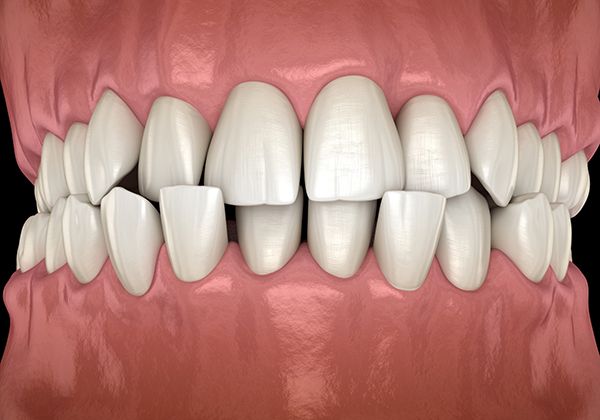
For teeth with severe misalignment, orthodontic treatment such as braces is more recommended than porcelain veneers.
A tooth that is not in an ideal position or crooked could limit the result of the veneers. It could put the tooth at high risk. This could sometimes result in bulky or crooked veneers. In some cases, it can also result in intentional root canal treatment on some teeth.
Underbite or overbite cases are not also ideal for veneers. To make sure porcelain veneers will last, it is ideal to correct the bite with braces or aligners first. This avoids any unnecessary trauma or pressure on the veneers.
You may ask, “Which is better, braces or veneers?”
The disadvantage of braces over veneers is that they will take a longer time to fix. Orthodontic treatments such as braces and aligners commonly last around 6 months to 2 years. You can get veneers in our office here in Del Mar, CA in as little as 2-3 weeks.
Read More: Thinking of getting Invisalign? Read our article about Invisalign and How to Save on Invisalign Cost.
A full crown will be more ideal for severe spacing or severe loss of natural teeth. Now, are veneers better than crowns?
Veneers only cover the front surface of the tooth. If the tooth structure left is not enough to hold the veneer, crowns will be more stable since it includes covering the whole tooth with porcelain.
Porcelain veneers can instantly fix permanently stained teeth, abraded teeth, small gaps between the teeth, slightly crowded or misaligned teeth, and teeth with gum recessions.
Although veneers are an instant fix to have the perfect smile, there are still limitations on the cases that they can fix. Find a cosmetic dentist who knows what treatment should be prioritized and not just focus on quick fixes which won’t last.
Myth 7. Everyone Can Get Porcelain Veneers
Porcelain veneers are not for everyone. This depends on the case of your teeth, age, and lifestyle. Detailed treatment planning should be done to check if you are a good candidate for veneers.
Before tooth preparation, a mock-up transfer or digital smile design of the proposed veneer could help assess if veneers can work for you.
Crowded teeth, severely spaced teeth, or TMJ disorders are some cases where porcelain veneers may not be the best treatment option right away. It might be more practical to fix the underlying cause first.
Once the teeth are stable, they can be reassessed if veneers are still an option.
Having an incorrect bite might cause the porcelain veneer to easily pop off or break. This will mean undergoing orthodontic or TMJD treatment first before getting veneers.
Can you get porcelain veneers? Make sure to look for a cosmetic dentist who can thoroughly assess your case if veneers are the only treatment option you need.
Missing a step or not addressing other factors will play a great role in the success of your porcelain veneers.
Myth 8. Porcelain Veneers Stain Easily
I also get this question a lot, “Do porcelain veneers stain?” The short answer is no. Porcelain veneers have a smooth, solid, non-porous layer, which makes it difficult for stains to stick on their surface.
But, don’t just go gulping on that red wine and munching on that curry sauce. There is still a natural tooth surface on the back where stains can easily adhere to.
Plaque formation can also cause staining on your veneers. Plaque can still stick to the surface. Once plaque is formed, stains can now easily adhere to the veneer.
Some common causes of stain include:
| Food | Beverages |
|---|---|
| Sauces with curry, tomato, and soy sauce | Red wine, tea, and, coffee |
| Bright and dark sugar candies | Carbonated soda with color |
| Dark-colored fruits and veggies | Energy drinks |
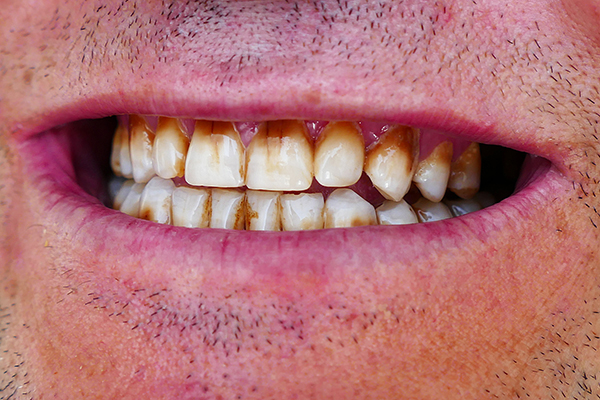
Porcelain veneers do not stain, but the natural teeth underneath still do. If wearing veneers, make sure to still have your regular dental cleaning.
Smoking and chlorhexidine are also common causes of staining. Although this can be easily cleaned, avoiding these will help keep your porcelain veneers looking pristine.
Make sure to have your regular cleaning and stain removal at least every 4-6 months.
Myth 9. Porcelain Veneers Are Too Expensive
Getting porcelain veneers to upgrade your smile doesn’t mean breaking the bank right away!
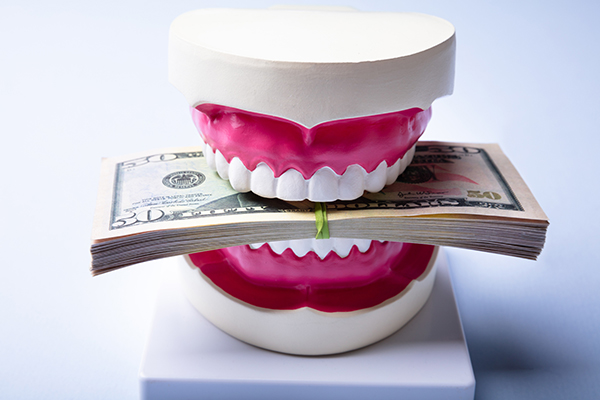
How much do veneers cost? To give you an idea, here’s the average pricing in San Diego compared to Blyss Dental’s prices:
| Cosmetic Dentistry Procedure | Average Price in San Diego (per tooth) | Blyss Dental Price |
|---|---|---|
| Composite Veneer | $850 | $890 |
| Porcelain Veneer | $1,800 | $1,852 |
| EMAX Veneer | $1,800 | $1,852 |
| Zirconia Veneer | $1,800 | $1,852 |
You might think that getting porcelain veneers means having veneers for all your teeth. No, you don’t need to get 20 porcelain veneers right away to cover your upper and lower front teeth.
You can start with just the 4 incisors (4 upper front teeth) if you qualify. This can be the most affordable and fastest way to upgrade your smile.
There are also cheaper material options for veneers but they do not give out the same results as porcelain veneers.
Another factor affecting the cost of porcelain veneers is dental insurance.
Most insurance companies don’t cover the cost of veneers since they are commonly considered a cosmetic procedure. But this depends on the reason why you are getting veneers.
For instance, you may have underlying conditions causing your teeth to have stains or look unnatural. Your dentist can then justify why you need porcelain veneers.
Although this does not guarantee that your insurance will cover it, your dentist should be able to disclose all factors leading to the treatment of choice.
Blyss Dental offers flexible financing to help you achieve your dream smile.
Myth 10. Porcelain Veneers Are For Young People Only
Porcelain veneers are not just for the young ones.
Yes, most young people get porcelain veneers because it’s the trend in social media. Most social media users belong to the younger age group. Who wouldn’t want to show off their pearly whites online?
But, older people can also get them! As we age, our teeth experience more wear and tear. This could include abrasions, discolorations, and cracks in the teeth.

People of all ages can get porcelain veneers.
Most older people who get veneers are professionals who have a lot of speaking engagements or are always in front of an audience. Or, they simply want to look good as they age.
Now, if you’re thinking about getting veneers, know that the color and shape of the porcelain veneer play a big factor in the overall appearance. These should be considered depending on your age.
Having more natural colored porcelain veneers (not ultra white) for older people helps avoid having fake or unnatural-looking teeth.
A shape that is sharper or rectangular also gives age to the appearance while a rounder or triangle shape may look more youthful.
A mockup or a temporary veneer will then be tried-on to your teeth, to check if the shape and color would suit you.
Porcelain veneers are not just for young people. Anybody who needs to upgrade their smile can definitely consider veneers no matter their age.
Myth 11. Porcelain Veneers Are Stronger And Better Than Natural Teeth
High-quality porcelain veneers are strong, but natural teeth are still stronger. Since our natural tooth is reduced when getting porcelain veneers, it will not be as strong as an untouched tooth. But, this doesn’t mean you shouldn’t get it done.
Again, look for a cosmetic dentist who can give you porcelain veneers with minimal tooth reduction.
Just like how we should protect our natural teeth, porcelain veneers require extra caution to make sure they will last. Some things to avoid when you have porcelain veneers are:
- Biting food like apples, burger, steak, or corn on a cob
- Tearing plastics like tape, sachets, or candy wrappers
- Nail-biting
- Not wearing a mouth guard during contact sports
- Not using night guard at night when sleeping
Now, do porcelain veneers break easily? Porcelain veneers do not break easily if they are well taken care of and regularly checked by the dentist.
Myth 12. You Can Just Glue Back A Porcelain Veneer That Falls Off
If your porcelain veneer falls off, you cannot just glue it back on right away. The best thing to do is bring it back to your dentist immediately.
Your dentist will assess the porcelain veneer for any cracks or damage. Your tooth will also be assessed to see the possible cause of dislodgement or checked for any cavities or fractures.
Porcelain veneers are meant to be permanently cemented or glued on the natural teeth.
A veneer may fall off from accidentally biting something hard. Another factor could also be from a traumatic bite from misaligned teeth or TMJ disorder.
If the veneer and the tooth check out, your dentist can try to recement it back on. However, if the veneer falls off too often, this might indicate that the tooth preparation needs to be modified and a new porcelain veneer will be fabricated.
Avoiding chewing or biting hard food will prevent your porcelain veneer from falling off. Wearing a night guard when sleeping or a mouth guard during sports is also a good way to protect your porcelain veneers.
This is why it is very important to do a thorough assessment of the overall bite and occlusion before getting porcelain veneers to avoid these kinds of problems.
It is not uncommon for a porcelain veneer to fall off but it can easily be prevented if the reason for falling off is addressed properly and correctly.
Blyss Dental provides a 5-year guarantee on your veneers so you can enjoy your smile, knowing we’ve got you covered.
Myth 13. Porcelain Veneer Is Purely Cosmetic
Porcelain veneers are not just for purely cosmetic reasons.
Why do people get porcelain veneers? Although most people who get porcelain veneers want to have a perfect smile, people who have congenital or in-born conditions like amelogenesis imperfecta or fluorosis also get porcelain veneers.
With amelogenesis imperfecta, the teeth might have irregular shape or color. They don’t have the same strength as the natural teeth, making them brittle and easily chip. This can sometimes affect speaking, biting, and chewing.

Dentists usually prescribe porcelain veneers to people with congenital problems such as amelogenesis imperfecta.
Fluorosis happens when there is too much fluoride intake in the system. This could cause white discolorations or small holes which demineralize the teeth.
Some people with “permanent stains” in their teeth develop insecurities that affect overall self-confidence. With porcelain veneers, they have the chance to improve their overall appearance.
Porcelain veneers are not just for vanity but can also be life-changing.
Myth 14. Porcelain Veneer Is Painful
Another common question from patients is if porcelain veneers are painful. The actual veneers are not painful when worn.
When getting porcelain veneers, minimal tooth reduction might be necessary and this could cause sensitivity or pain for some people.
You may feel temporary minor pain and sensitivity during the procedure. But a good cosmetic dentist will know how to numb your teeth to remove that pain and discomfort. Your dentist will need to give you anesthesia to numb your teeth before the tooth preparation.
A spray or gel anesthesia will be numb your gums off before putting in the anesthesia itself. There might be a little discomfort at first but once the anesthesia is in, you will no longer feel the sensitivity.
It is also common for a little soreness or tooth sensitivity after the appointment. Pain relievers usually resolve it. But don’t worry! Your veneer is only temporary until it is done.
Any pain or sensitivity after cementing your porcelain veneers is something that you should look out for or something you should tell your dentist. This sensitivity could be a starting nerve or pulp damage which might require a root canal treatment.
Excess cement material might also cause gum bleeding or periodontal problems if left untreated.
Your bite or occlusion might also change when you get porcelain veneers. This might indicate any abnormal or premature contact when you bite.
Porcelain veneers should not be the cause of any additional pain or discomfort on your teeth. Don’t be afraid to tell your dentist any discomfort or pain you have. Let your dentist address any problems first.
Conclusion
Porcelain veneers are a great cosmetic dentistry option. But, you have to make sure you fully understand what the process of getting it entails.
Understanding the truths behind the most common myths in porcelain veneers will help you decide on what will suit you best and can further discuss with your dentist.
Find a cosmetic dentist in San Diego with whom you can comfortably discuss your treatment options and give you a thorough assessment.
If you are looking for a cosmetic dentist who can give you the best porcelain veneers in Del Mar and San Diego, don’t hesitate to book a free appointment with us here at Blyss Dental.
